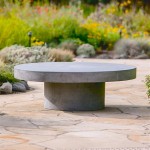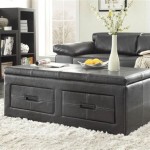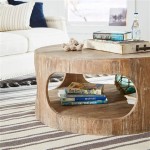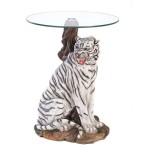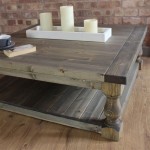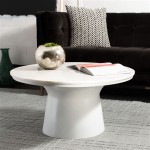Types of Tables Used in the Restaurant Industry
The restaurant industry relies heavily on efficient and aesthetically pleasing furniture to create a positive dining experience. Tables, in particular, are a foundational element, impacting not only the seating capacity but also the overall ambiance and operational flow. Selecting the appropriate types of tables is crucial for optimizing space, accommodating various group sizes, and projecting the desired aesthetic. This article will explore different types of tables commonly utilized in the restaurant industry, focusing on their characteristics, suitability, and potential applications.
Standard Dining Tables: Versatility and Functionality
Standard dining tables represent the backbone of most restaurants. These tables are typically rectangular or square and designed to accommodate two to four diners comfortably. The dimensions of standard dining tables can vary, but a common size for a two-person table is approximately 30 inches by 30 inches, while a four-person table often measures around 36 inches by 36 inches. Rectangular tables, frequently used for larger parties, can range in length from 48 inches to 72 inches or more, depending on the number of seats they are intended to accommodate.
The materials used in constructing standard dining tables are diverse, encompassing wood, metal, laminate, and composite materials. Wooden tables offer a classic and warm aesthetic, often favored in upscale or rustic dining environments. The type of wood used, such as oak, maple, or cherry, can significantly influence the table's visual appeal and durability. Metal tables, particularly those constructed from stainless steel or wrought iron, are known for their strength and durability, making them suitable for high-traffic areas or outdoor seating. Laminate tables offer a cost-effective and easy-to-clean option, often employed in casual dining settings or areas where spills are frequent. Composite materials, such as MDF (medium-density fiberboard) or particleboard, provide a versatile and affordable alternative for table construction, often finished with a veneer or laminate for aesthetic purposes.
The design of standard dining tables can range from simple and minimalist to ornate and decorative, depending on the restaurant's overall theme and branding. Table bases are typically pedestals, legs, or trestles, each offering varying degrees of stability and legroom. Pedestal bases, with a single central support, provide ample legroom and a sleek appearance. Leg bases, with four legs positioned at the corners of the table, offer a stable and traditional aesthetic. Trestle bases, featuring two or more vertical supports connected by a horizontal beam, provide a rustic and visually interesting alternative. The choice of table base should consider both aesthetic preferences and practical factors, such as stability and ease of cleaning.
In addition to their standard dimensions and constructions, standard dining tables can be customized to meet specific restaurant needs. Table heights can be adjusted to accommodate different seating preferences, such as standard chair height or bar-height stools. Table edges can be rounded or beveled for safety and comfort. Table surfaces can be treated with protective coatings to resist scratches, stains, and heat damage. Furthermore, standard dining tables can be combined or rearranged to accommodate larger groups, providing flexibility in seating arrangements.
Booth Seating: Privacy and Comfort
Booth seating offers a distinct dining experience, providing diners with a sense of privacy and comfort. Booths typically consist of two or more upholstered benches facing each other, separated by a table. The benches are often enclosed on three sides, creating a semi-private dining space. Booths are particularly popular in family-friendly restaurants, diners, and casual dining establishments.
The dimensions of booth seating can vary depending on the desired seating capacity and the overall layout of the restaurant. A standard booth designed for four people typically measures around 48 inches wide and 72 inches deep. Booths can be customized in length to accommodate larger groups. The height of the booth benches is typically around 18 inches, providing a comfortable seating position for most adults. The table placed within the booth can be attached to the wall or floor for stability or remain freestanding for flexibility.
The materials used in constructing booth seating are chosen for durability, comfort, and aesthetic appeal. Booth frames are typically constructed from wood or metal, providing a sturdy and stable foundation. The benches are upholstered with a variety of materials, including vinyl, leather, and fabric. Vinyl is a popular choice due to its durability, ease of cleaning, and resistance to stains. Leather offers a luxurious and sophisticated aesthetic, but requires more maintenance and is typically more expensive. Fabric provides a wider range of colors and patterns, but may be more susceptible to stains and wear. The choice of upholstery material should consider the restaurant's overall theme, budget, and maintenance requirements.
The design of booth seating can be customized to complement the restaurant's overall aesthetic. Booth backs can be plain or tufted, adding visual interest and texture. Booth ends can be open or closed, providing varying degrees of privacy. Booths can be arranged in a variety of configurations, such as linear rows, curved formations, or horseshoe shapes. The choice of booth design should consider the restaurant's overall layout, seating capacity, and desired ambiance.
In addition to their standard features, booth seating can be equipped with various amenities to enhance the dining experience. Power outlets and USB ports can be integrated into the booths, allowing diners to charge their electronic devices. Lighting fixtures, such as sconces or spotlights, can be installed to provide additional illumination. Soundproofing materials can be incorporated into the booth walls to reduce noise levels and enhance privacy. These additional amenities can significantly enhance the comfort and convenience of booth seating.
High-Top Tables and Bar Seating: Casual and Social Environments
High-top tables, also known as bar tables, are elevated tables designed to be paired with bar stools. These tables are typically taller than standard dining tables, ranging in height from 40 inches to 42 inches. High-top tables are commonly used in bars, pubs, and casual dining establishments, creating a more social and informal atmosphere.
The dimensions of high-top tables can vary depending on the desired seating capacity and the overall layout of the restaurant. A standard high-top table designed for two people typically measures around 24 inches to 30 inches in diameter or width. High-top tables can be square, rectangular, or round, offering flexibility in seating arrangements. The table bases are typically pedestals or four-legged designs, providing stability and support.
The materials used in constructing high-top tables are similar to those used in standard dining tables, encompassing wood, metal, laminate, and composite materials. Wooden high-top tables offer a warm and inviting aesthetic, often favored in pubs and rustic dining environments. Metal high-top tables provide a sleek and modern appearance, suitable for contemporary bars and lounges. Laminate high-top tables offer a cost-effective and easy-to-clean option, often employed in high-traffic areas. The choice of materials should consider the restaurant's overall theme, budget, and maintenance requirements.
Bar seating typically consists of bar stools arranged along a counter or bar. Bar stools are designed to be taller than standard chairs, allowing diners to comfortably sit at the elevated bar surface. Bar stools can be backless or feature a backrest for added comfort. The seats can be upholstered or made from wood, metal, or plastic. Bar stools are a key element in creating a vibrant and social atmosphere in bars and restaurants.
High-top tables and bar seating can be strategically positioned to maximize space and create a dynamic dining environment. High-top tables can be placed along walls or windows, providing diners with views of the surrounding area. Bar seating can be arranged along the bar counter, creating a natural gathering place for patrons. High-top tables and bar seating can also be used to create distinct zones within a restaurant, such as a casual bar area or a more formal dining section.
The selection of tables in a restaurant is a complex process that requires careful consideration of various factors, including space constraints, seating capacity, aesthetic preferences, and budget limitations. Understanding the different types of tables available and their respective characteristics is essential for creating a functional, attractive, and profitable dining environment.

Best Type Of Restaurant Table Designs To Enhance Customer Experience Petpooja

The 5 Best Dining Tables Of 2025 Reviews By Wirecutter

Restaurant S Guide To Steam Tables Webstaurant

The 5 Best Dining Tables Of 2025 Reviews By Wirecutter

Table Setting Etiquette 101 A Brief Guide Escoffier

The Diffe Types Of Table Service You Need To Greycoat Lumleys

The 5 Best Dining Tables Of 2025 Reviews By Wirecutter

The 5 Best Dining Tables Of 2025 Reviews By Wirecutter

The 5 Best Dining Tables Of 2025 Reviews By Wirecutter

Dining Tables Herman Miller
Related Posts

